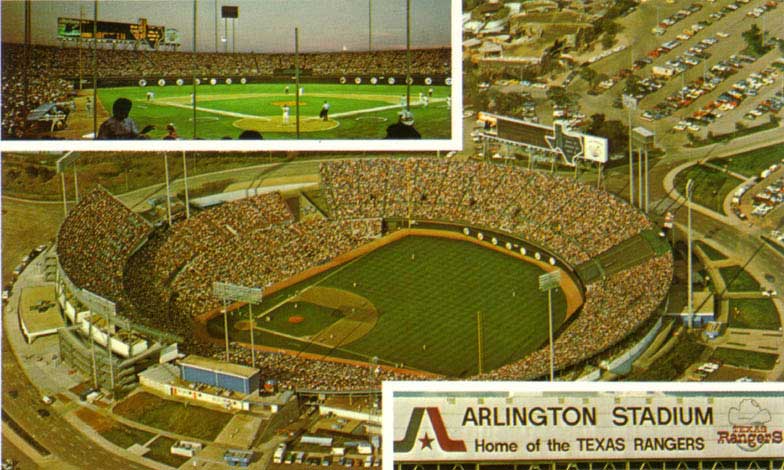
|
Arlington Stadium | |||||||
|
Arlington, TX
| Team: Texas Rangers | Capacity: 10,500 (1965); 20,000 (1970); 35,698 (1971); 41,097 (1979); 43,521 (1992) |
| Cost: $1.9 million (1965) $19 million (renovations) | Dimensions: LF 330 CF 400 RF 330 |
| Demolished: 1994 | Opening Day: April 23, 1965 |
| First Twins Game: April 21, 1972 | Closing Day: October 3, 1993 |
| Surface: Tifway 419 Bermuda grass | Owner: City of Arlington |
| AKA: Turnpike Stadium (1965-71) |
Memorable Moments:

Even though this park was built for the Fort Worth Cats (later renamed the Dallas - Fort Worth Spurs), the idea from the beginning was to attract a MLB franchise here. This was the ideal location for a ballpark in the Metroplex, halfway between Dallas and Forth Worth. The stadium was built in a natural bowl, so the only initial digging that needed to be done was connecting the clubhouses to the dugouts. Seats for fans were built on natural slopes. As a result, the cost of this ballpark was 1/10 of what it would cost to build a similar facility somewhere else. The capacity of this park was almost doubled in 1970, by adding a lot of wooden bleachers.

In 1971, when the Washington Senators announced that they were moving here, the park was expanded again to 35,698 and renamed Arlington Stadium, as the locals felt Turnpike Stadium was inappropriate for a Major League park. Until 1979, when the capacity was expanded to 41,097, fans used to enter at the very top of the stadium. This park had one of the largest bleacher sections in the Majors, stretching from foul pole to foul pole. This park always had a "slapped together" feeling, where you could always tell it was once a Minor League facility. Also, since it was built in the bottom of a bowl, with no roof, there was no protection from the Texas heat, and it was by far the hottest park around, with game time temperatures often over 100 degrees. The scoreboard was shaped like the state of Texas. "Cotton-Eyed Joe" was played during the 7th inning for fans to dance to instead of "Take Me Out to the Ballgame". In 1994, some of the bleachers, the foul poles, and home plate were moved to a new stadium, and this one was demolished.
© 2008-17 Paul Healey. Post photo © its owner. Used without permission.